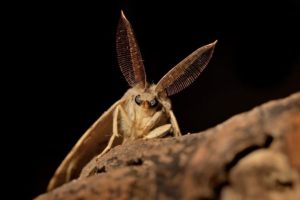Moth Management: Risks Posed by Species Seen in Virginia

Compared to other pests, the moth seems like a quiet, inoffensive creature. The insect does not buzz around like flies, threaten to sting like bees, or cause nightmares as the average spider can. Moths also often don’t gnaw on wood and destroy a home. But while the moth may seem harmless compared to other insects, it is a pest that homeowners should not ignore.
The Opportunistic Home Invader
The brown moth is active during the summer and fall. This pest thrives nearly anywhere its larvae can develop. The larvae are willing to compromise on what it eats, so the moth can lay the eggs in a variety of places. The larvae spin their cocoons in the food source and consume the food during its development.
Food to the brown moth larvae includes cereals and grains, as well as paper and all types of textiles. The larvae must have humidity to develop, so the summer climate in Virginia is perfect for their growth. The larvae take about 2–5 months to mature based on the conditions of where they are.
The Grain-Eating Moth
The larvae of the Indian meal moth also infest food supplies as it develops. The pest can enter food products in homes but is often a larger concern with animal feed. The insects can decimate grain produced for sale as well as the on-site supplies for farm animals. The moths can make the product unfit for use as well as consume large amounts.
Indian meal moths are difficult to eradicate because they live in food supplies, so pesticides are unsafe to use to remove large infestations. The larvae can chew through cardboard and some types of soft plastic to reach the food inside. Metal, glass, and thick plastic containers can help to keep the larvae out of food in a pantry or kitchen.
The Destroyer of Trees
Gypsy moths are not native to Virginia, and their existence is particularly worrisome because they have few natural predators in the area. The insects can defoliate large swaths of trees and cause widespread destruction due to their hearty appetites. The level of risk of the gypsy moth in Virginia rises and falls. Areas with large populations are quarantined to halt their spread.
Get an accurate identification of any moths that suddenly appear in the yard. A pest removal expert can inspect the site and help the homeowner to contact state officials if the pests are gypsy moths. Special insecticides and other tactics may be needed to remove the infestation according to the guidelines of the Virginia Gypsy Moth Suppression Program.
The Common Closet Foe
The most common problem people worry about with moths is the destruction they can cause to clothing. Wool is a common target for clothes moths, but they will feed on any natural animal fiber. Leather, fur, and silk are also at risk. Their diet choice means that any product made from these materials is at risk, including car seats, carpets, and more.
The use of mothballs is often ineffective and could cause health risks. The fatal effects often only kill the moths and larvae if they are in a sealed area (like a plastic bag) with the insecticide. Additionally, the mothballs are a poison risk to children and animals if ingested. The scent of mothballs is the airborne pesticide, and some studies performed on animals suggest it is a cancer risk.
Moths rarely incite the fear and disgust of other pests, but they can still become a serious household problem. At PermaTreat Pest and Termite Control, we can help you to find a safe, effective solution for their removal or the removal of any other pest. Contact us to schedule an inspection.


































































